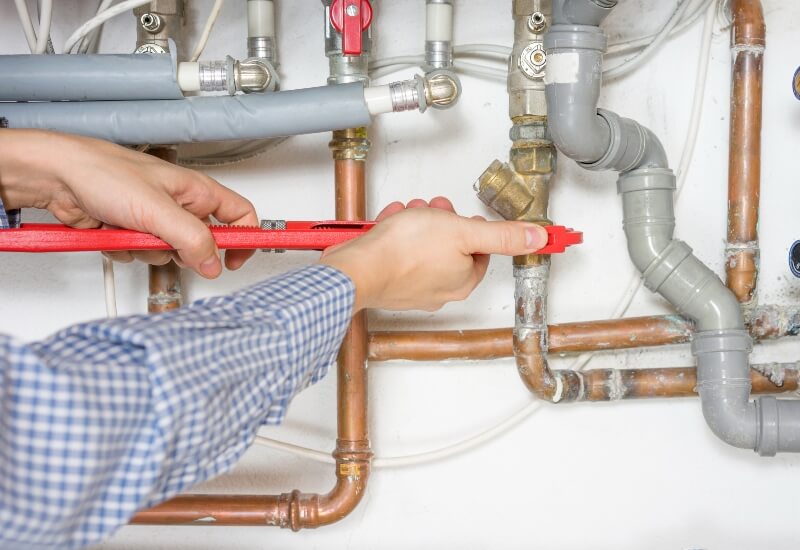In today’s rapidly advancing industrial landscape, the introduction of the smart pneumatic valve marks a new era in control systems. This innovative technology is changing how industries manage their operations, enhancing efficiency, and reducing downtime.
The integration of smart pneumatic valves into industrial systems offers unparalleled precision and adaptability, crucial for modern engineering. As industries pursue more intelligent and responsive solutions, these valves stand out for their ability to seamlessly blend into existing systems while providing real-time data and diagnostics.

What is a Smart Pneumatic Valve?
The smart pneumatic valve is a sophisticated control device used in various applications for regulating the flow and direction of air or gas. What sets it apart from traditional pneumatic valves is its incorporation of sensors and digital communication technologies. This enables the valve to not only execute basic functions but also communicate with other devices, integrate with control systems, and provide valuable data for predictive maintenance.
The Evolution of Pneumatic Valves
From Manual to Automatic
Historically, pneumatic valves were manually operated. The shift to automatic valves introduced efficiency, yet these .systems lacked the connectivity features present in today’s smart pneumatic valves.
Integration of Technology
The journey from simple mechanics to complex electronic systems showcases the industry’s adaptability. Today’s valves are equipped with sensors that monitor pressure, temperature, and flow rate, feeding this data into a centralized system for comprehensive analysis.
Advantages of Smart Pneumatic Valves
One of the significant benefits of smart pneumatic valves is their ability to reduce operational costs. By providing data insights, these valves allow for timely maintenance, preventing unexpected failures and downtime.
Additionally, smart pneumatic valves enhance energy efficiency. They adjust precisely to the system’s needs, minimizing wastage and regulating energy use effectively.
Real-Time Monitoring and Control
These valves allow operators to monitor system performance in real time, facilitating quick responses to changing conditions. This capability is essential in sectors where precision is critical, such as pharmaceuticals and food processing.
Predictive Maintenance
By analyzing data from multiple valves, the system can predict potential failures and recommend maintenance schedules, significantly extending equipment life and reliability.
Application Across Industries
Smart pneumatic valves are versatile, finding applications across various industries. Their use ranges from manufacturing and processing plants to healthcare and food industries, each benefiting uniquely from the integration of smart technology.
Manufacturing and Processing
In manufacturing, the precise control provided by these valves ensures improved product quality and operational efficiency. They are crucial in automating complex tasks and maintaining consistent processing conditions.
Healthcare
In the healthcare industry, these valves play a critical role in devices that require precise control of gases, such as ventilators and anesthesia machines.
Food and Beverage
The smart pneumatic valve guarantees food safety and quality by maintaining hygienic conditions in food processing environments. Their ability to provide accurate control of ingredients ensures consistency and compliance with health regulations.
Challenges in Implementation
While smart pneumatic valves offer numerous advantages, their implementation is not without challenges. Initial costs, integration with existing systems, and the need for specialized training can present obstacles.
However, as technology continues to evolve, these challenges are becoming increasingly manageable, paving the way for broader adoption across industries.
The Future of Smart Pneumatic Valves
The future of smart pneumatic valves is promising, with ongoing advancements poised to enhance their capabilities further. Innovations such as AI integration and improved connectivity will bolster their utility and reliability.
As industries aim for sustainability and efficiency, the demand for smart pneumatic valves will only grow, driven by the need for smarter, more sustainable operational practices.
Comparing Traditional and Smart Valves
To understand the full potential of smart pneumatic valves, it’s beneficial to compare them with traditional valves. Traditional valves, while reliable, lack the data communication and automation features which are intrinsic to smart pneumatic valves.
This difference results in reduced operational flexibility and increased maintenance requirements for traditional systems.
Advantages of Smart Systems
Smart systems allow for agile adjustments, significantly improving system responsiveness and overall efficiency. This adaptability is crucial in fast-paced environments where changes need to be implemented swiftly.
Conclusion
In conclusion, the advent of the smart pneumatic valve marks a significant milestone in industrial engineering. These valves offer unprecedented levels of control, efficiency, and data-driven insights, promising to drive industry innovation for years to come.
As industries continue to prioritize sustainable and efficient solutions, the role of smart pneumatic valves will become increasingly central, heralding a new era of industrial control and automation.

FAQ Section
1. What industries benefit most from smart pneumatic valves?
These valves are highly beneficial across various sectors, including manufacturing, healthcare, and food processing, due to their precision, efficiency, and data integration capabilities.
2. How do smart pneumatic valves enhance operational efficiency?
By providing real-time monitoring and control, as well as enabling predictive maintenance, these valves significantly reduce downtime and improve energy efficiency.
3. Are there challenges in integrating smart pneumatic valves?
Initial costs and compatibility with existing systems pose challenges, but ongoing technological advancements are making integration smoother and more cost-effective.
For further details on how smart technologies are impacting industries, you can read an informative article on smart valves in industrial settings.
This article contains affiliate links. We may earn a commission at no extra cost to you.



